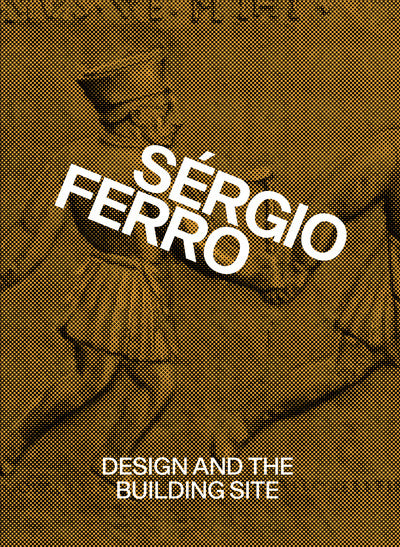Design and the Building Site and Complementary Essays
- Authors: De (auteur) Sergio Ferro
- Publishers: MACK
- Date of Publication: 2025-06-01
- Pages: 280
- Dimensions: 225mm x 165mm
Dating from the early 1970s, ‘Design and the Building Site’ is Sérgio Ferro’s
most influential theoretical work. Written just after Ferro had arrived in
France after fleeing the military dictatorship that took power in Brazil in 1964
and arrested him in 1970 for his involvement in active resistance, the essay
reflects much of what he had left behind: encounters with Brasilia’s harsh
construction sites; experiences with the collective Arquitetura Nova; work on
the editorial committee of the journal Teoria e Prática; and the year Ferro
spent in prison, befriending construction workers and reading Freud. The text
constitutes a critique of architectural production under capitalism, surveying
the political economy of architectural production and its influence on the
contemporary practice of architecture. Half a century after its first
publication, and in the face of capitalism’s greatest crisis, it has never
offered such a pressingly relevant call for action. This edition contextualises
and expands on Ferro’s essay with earlier and later texts, clarifying both the
contextual and theoretical elements at play in its argument. A preface written
by Ferro especially for this first English-language edition recounts his journey
from Brasilia’s building sites to the experiments of Arquitetura Nova, as well
as a topic he has rarely touched on before: postmodernism. ‘Production of Houses
in Brazil’, from 1969, analyses the Brazilian dwellings from popular self-builds
to the luxury and mass markets, offering both a historical report and a
blueprint for deciphering the social relations of architectural production in
other contexts. Finally, ‘Against the Grain’, a recent and previously
unpublished essay, interprets architectural modernism as a Hegelian ‘determinate
negation’ of nineteenth-century eclecticism. Together, these texts constitute a
deeper exploration of the theory introduced in Architecture from Below: An
Anthology, and offer a broad range of challenging and vital ideas to builders,
thinkers, and architects today.
Share











